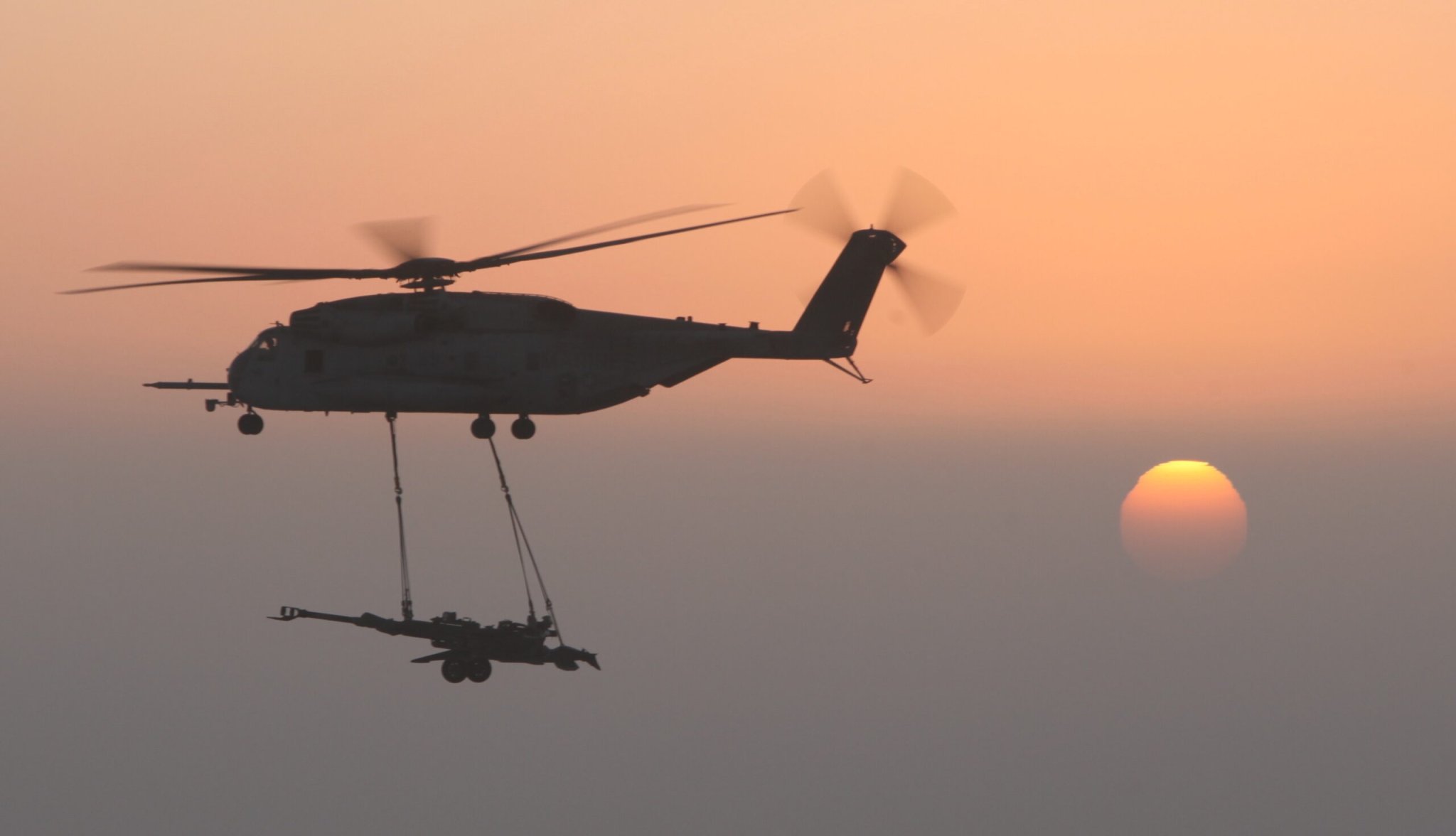

An off-hand comment by the Pentagon’s chief acquisition official did not signal the end of artillery in an armed conflict with China but his words reflect a larger shift in the way the U.S. is preparing for a potential war.
Speaking to a think tank audience, Undersecretary of Defense for Acquisition and Sustainment Bill LaPlante addressed criticism that the U.S.’s stockpile of 155mm artillery rounds sent to Ukraine was reducing readiness in the Indo-Pacific.
“Somebody said one time that [reducing the stockpiles of] 155s was really putting us in danger for the Pacific,” LaPlante said. “I just don’t know what you’d fire a 155-round at out in the Pacific other than the water.”
LaPlante’s off-hand comment on long-range fires in the Pacific theater drew some laughs from the audience but set off a chorus of reactions among artillery defenders on social media.
“He knows INDOPACOM covers 52% of the earth? 7 of the 10 largest militaries?” wrote one commenter. “But yeah, I guess water is an answer.”
But it wasn’t just internet voices. Gen. Charles Flynn, the four-star Army general charged with keeping the Army ready for war in the Pacific, voiced his disagreement at a panel days later.
“There are 10,000 tubes of artillery staring down at the South Koreans,” Flynn said in response to LaPlante’s comments during the Association of the U.S. Army conference last week. “I think 155s are going to be useful over there as counterfire and I can pick out a number of other places in the Pacific where you’re going to need tube, self-propelled, and mobile rocket artillery.”
Pentagon officials told Task & Purpose that LaPlante’s comments weren’t a dismissal of artillery, but that “intra-theater distances throughout many parts of the Indo-Pacific area of operations can limit the use of the 155mm artillery systems currently being employed by the Ukrainians so successfully.”
Subscribe to Task & Purpose Today. Get the latest military news and culture in your inbox daily.
However, the acquisition chief’s comments illustrate the Defense Department’s emerging strategy in the Indo-Pacific to combat logistics issues across the vast distances of the region and with an adversary like China with similar economic and technological capabilities.
As a result, the Defense Department is increasingly looking to utilize commercial off-the-shelf technology like drones, satellites, and artificial intelligence, rather than invest in long-term development projects that can take years or decades to reach the field.
A watershed moment in the Defense Department’s shift toward commercial technology came in August when Deputy Defense Secretary Kathleen Hicks announced the “replicator initiative.” With replicator, the Defense Department wants to field thousands of cheap, disposable, purpose-built autonomous systems in the next two years to counter China’s advantage of “mass” with more ships, missiles, and forces.
And to put new technologies on the ground in the Pacific, the Defense Department also said it would send personnel from the Defense Innovation Unit to the region. DIU is charged with speeding up how the Pentagon buys and adopts new technologies.
The initiative follows a similar vision laid out in former DIU Director Michael Brown’s Hedge Strategy which calls for scaling the development and purchase of low-cost, autonomous, smart weapons and designs to complement existing weapons systems that are costly, complex, and often years in the making.
At least one Marine planner said LaPlante’s greater point is true for most of the Pacific.
“Our primary focus is now integrating with the Navy to affect the maritime domain,” said Lt. Col. Miguel Cruz, deputy plans officer at Marine Corps installations Pacific. “In that context, 155 is extremely limited in what it can do. It just doesn’t have the range.”
But, Cruz said, artillery was in no danger of disappearing from U.S. arsenals in the region, even as the U.S. rushes to supply the ongoing fight in Ukraine and hostilities in Israel. The Pentagon is adding production lines and investing in computerized manufacturing to meet its goal of producing 100,000 155mm shells per month, or more than one million in total by 2025.
Officials have said the U.S. can continue to supply both countries while securing its own stockpile.
“A lot of people would be aghast if someone were to say that 155, or that our traditional artillery is useless in the Pacific because there are definite anecdotes and historical examples where it was important,” Cruz said.
The latest on Task & Purpose
- Navy fires captain of guided-missile cruiser USS Lake Erie
- The M10 Booker Combat Vehicle is definitely a tank, says Gen. Abrams
- Why Navy SEALs wear a trident and other facts about life as a frogman
- A-10 Warthogs arrive, more U.S. forces coming amid Israel-Gaza fighting
- Army plans to cut ‘unnecessary maintenance’ on vehicles and weapons
